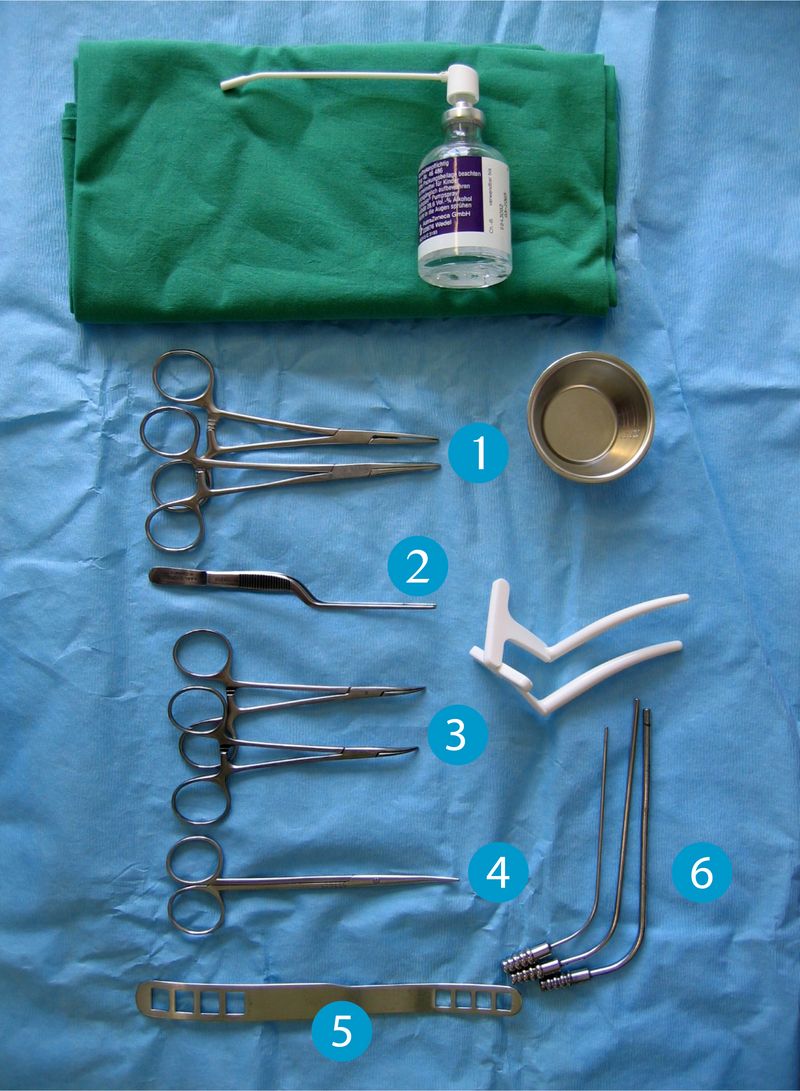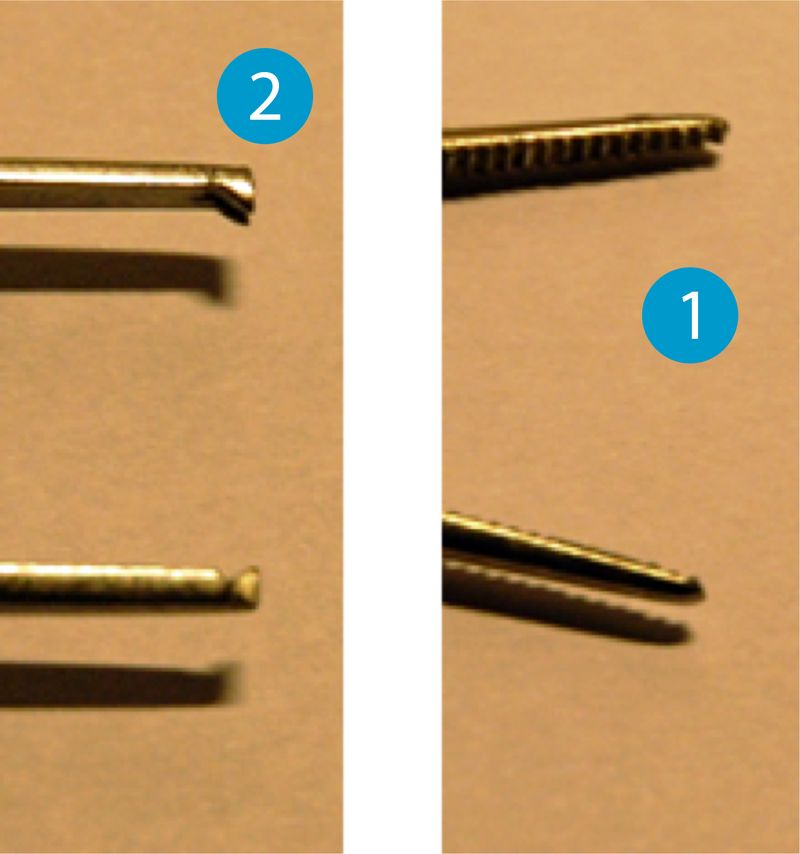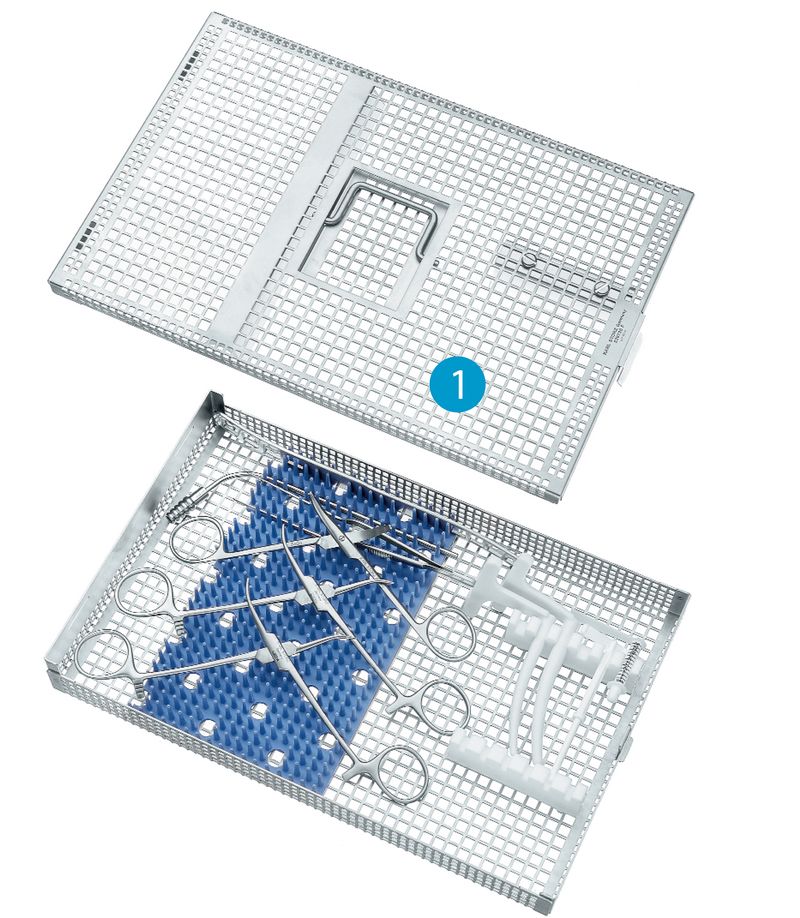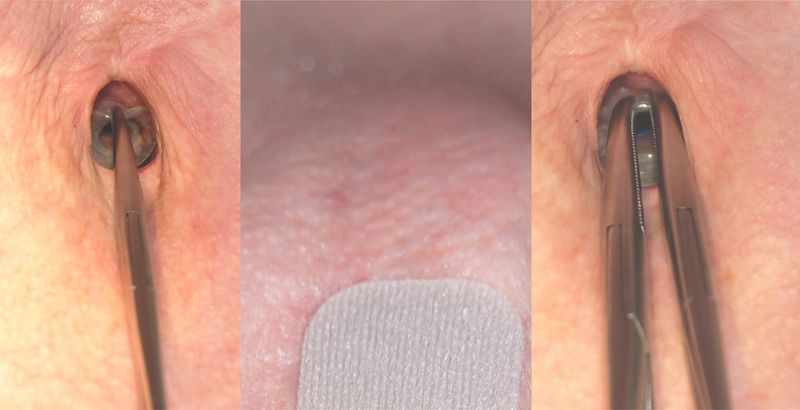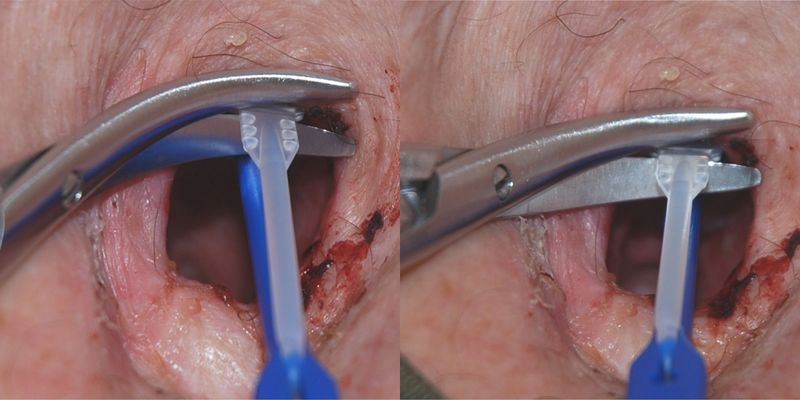Surgical instruments
Sterile surgical instruments are used to change voice prostheses:
(1) Anatomical clamps for double clamping and drawing out faulty voice prostheses
(2) Bayonet tweezers to remove scabs and to rotate the voice prosthesis
(3) Angled anatomical vessel clamps to unfold the tracheal flanges if the voice prosthesis has been pushed all the way into the esophagus
(4) Scissors to cut off the retention strap
(5) Tongue retractor to present the guide wire in retrograde replacement of a voiceprosthesis
(6) Suction tubes, (1 mm, 2 mm, 3 mm diameter) to extract saliva and mucus from the tracheostoma
The Karl Storz Voice Prosthesis Set
As it is not desirable for the practitioner to have to search for the suitable instruments whilst changing a voice prosthesis, we have combined all the required instruments in a voice prosthesis set.
The years have shown that staff who have not received specific training find it very difficult to maintain surgical instrument sets.
That is why we worked together with the Karl Storz company to compile a voice prostheses screen (1) that meets modern requirements for the sterilization of surgical instruments with open branches as well as meeting the requirements of the operator and the preparing staff.
A length measuring device and shunt dilators are included in the set to complete the surgical range.
In order to be well equipped for routine voice prosthesis changes and in the event of sudden problems, we have developed an instrument set that meets the particular requirements of voice prosthesis changes and that can be used for all available prosthesis types and insertion methods.
Specially angled anatomical clamps for safe atraumatic clamping and complete extraction of the voice prosthesis being removed even with a narrow tracheostoma and deep-set esophagotracheal fistula. Bending the clamp allows it to be positioned safely on the cranial edge of the voice prosthesis without the need for a turning/tilting movement of the clamp. The anatomical toothed structure combined with the closure prevents the prosthesis from being lost from the esophagotracheal fistula during extraction and being aspirated. We strongly recommend double clamping the voice prosthesis that is being removed.
Strongly curved scissors. The scissors are curved at 90° with rounded branches, and make it easy to cut straight the retaining tape of the voice prosthesis without damaging the trachea (photo).

